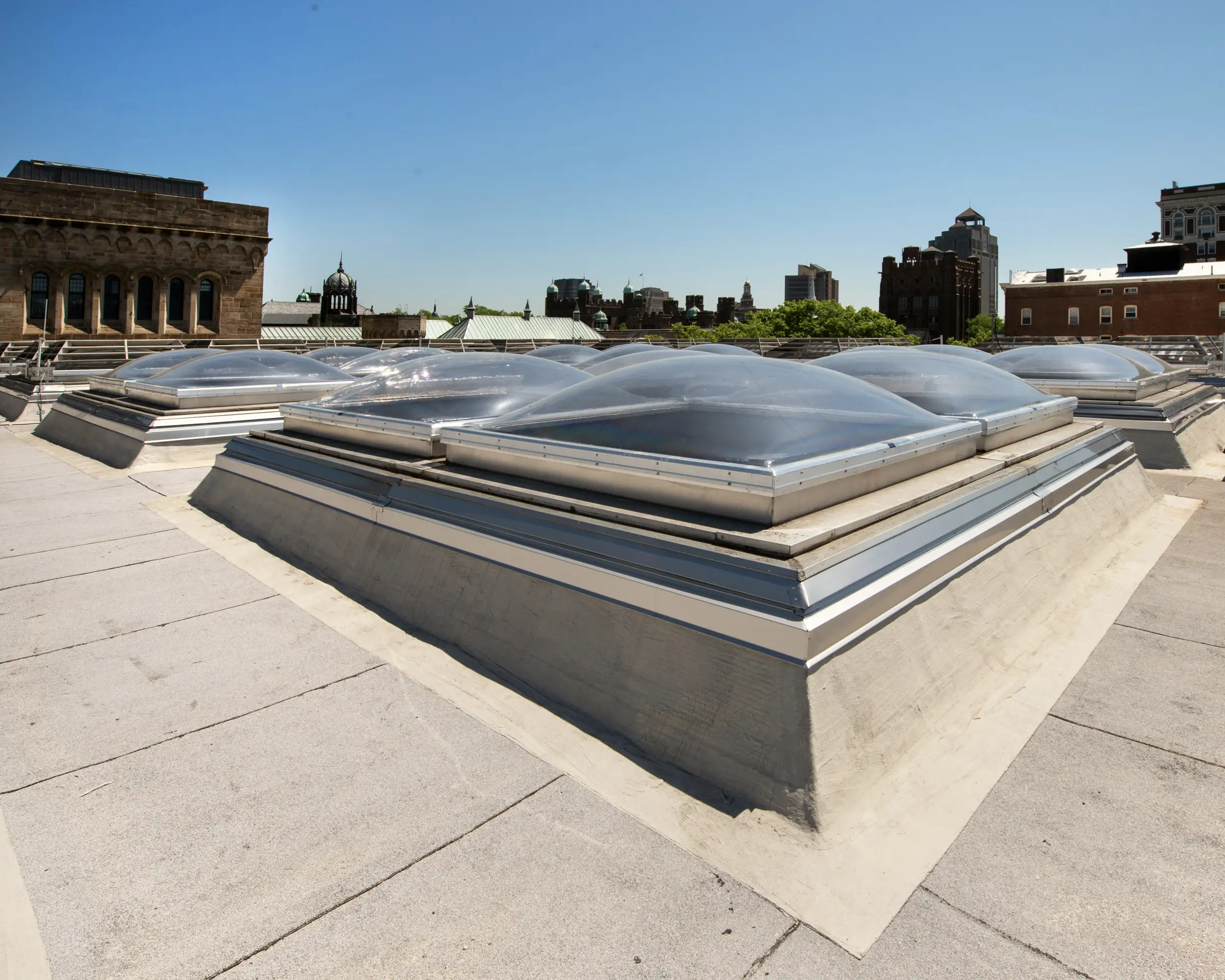Louis Kahn’s Yale Center for British Art, home to the largest collection of British art outside of the United Kingdom, will reopen to the public on March 29, 2025, after being shuttered for two years.
The Center is currently closed while a roughly $16.5 million conservation project nears completion. The effort includes significant exterior improvements and the replacement of the museum’s original halogen lighting system. A full reinstallation of the Center’s expansive collection will also greet visitors when they return next year, along with landmark solo exhibitions showcasing two “celebrity” English artists living centuries apart. The first, Romance and Reality, commemorates the 250th anniversary of famed landscape painter J.M.W. Turner’s birth; the other, I Loved You Until the Morning, marks the first major showing of contemporary artist Tracey Emin in a North American museum.
Located in downtown New Haven directly across Chapel Street from Kahn’s first major commission, the Yale University Art Gallery (1953), the Center is the final building fully designed by the Estonia-born architect. It was completed in 1977, three years after his death in New York City at the age of 73. Sheathed in matte steel and reflective glass panels and featuring independent commercial retail storefronts at street-level (novel for a museum at the time), the rectangular, four-story structure is centered around two interior courtyards; its intimate galleries are illuminated by diffused natural light.

Entrance Court skylights. Photo by Richard Caspole
This latest round of work at the Center is being carried out by a team that includes Knight Architecture in the role of conservation project architect along with Deborah Berke, EwingCole, Wiss, Janney, Elstner Associates, the Yale Office of Facilities, and others. It follows a previous phase of the conservation project from 2015–2016 that concentrated on interior upgrades—including modernized mechanical, electrical, and plumbing systems—and improved visitor amenities. Both phases spring from 2011’s Louis Kahn and the Yale Center for British Art: A Conservation Plan, authored by British architects Peter Inskip and Stephen Gee in association with the museum’s former deputy director, Constance Clement.
At a recent media event teasing the Center’s reopening, George Knight, founding principal of Knight Architecture and senior critic at the Yale School of Architecture, described Inskip and Gee’s document as the “first such plan developed for an American building.”
“It’s an enormously valuable tool that has carried us through the conservation of the building, which was once described by a previous director as the largest and most complex work of art in the collection,” Knight said.
As noted by the museum, the soon-to-be-unveiled project strives to “replace many of the original building materials, taking advantage of new advances in technology since the 1970s while preserving the aesthetic qualities of Kahn’s design.”

Roof view of Yale Center for British Art. Photo by Richard Caspole
Major undertakings include the installation of a new liquid membrane roof and 224 polycarbonate skylights replacing the acrylic originals, many of which had yellowed over time. The skylights, which define the building’s roof (the “fifth elevation,” as Kahn called it), are a close facsimile of the architect’s design but offer improved energy-efficiency, durability, and weather resistance. New laylight cassettes that diffuse sunlight coming into the gallery spaces were also inserted into the skylight domes. The cassette system features a removable, light-reducing film that “reduces light exposure levels to better align with modern art conservation standards while remaining true to Kahn’s vision for the aesthetic quality and variation of daylight inside the building.”

New window cassette. Photo by Richard Caspole
In conjunction with these exterior upgrades is the third and final element of the latest conservation phase: an LED-based overhaul of the museum’s artificial lighting system. Made possible in part by the Frankenthaler Climate Initiative, the effort entails replacing more than 6,500 linear feet of track lighting and retrofitting more than 600 fixtures.
The full collection reinstallation on the museum’s fourth floor, meanwhile, will display the work, which spans the 16th century to the present, in an uninterrupted chronological sequence for the first time. The reconfiguration was made possible, the Center noted, by Kahn’s flexible design for the galleries.
“The rehang encourages visitors to find their own paths through the collection and discover connections across time and place,” it said in a statement, “inviting both new and returning audiences to engage with British art in novel ways.”




